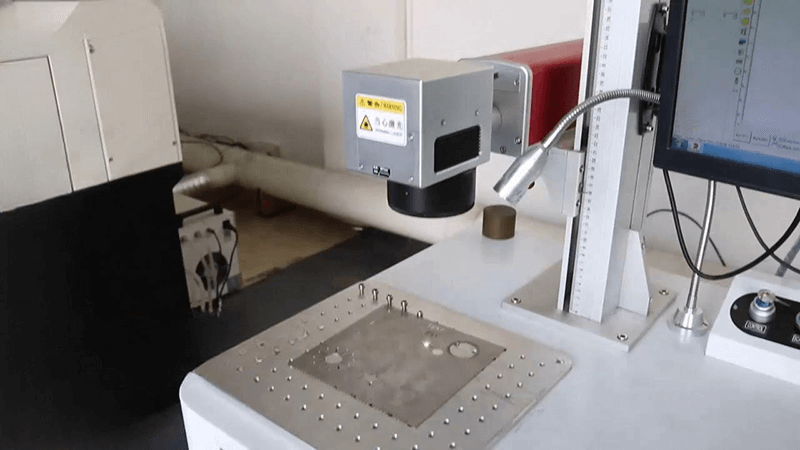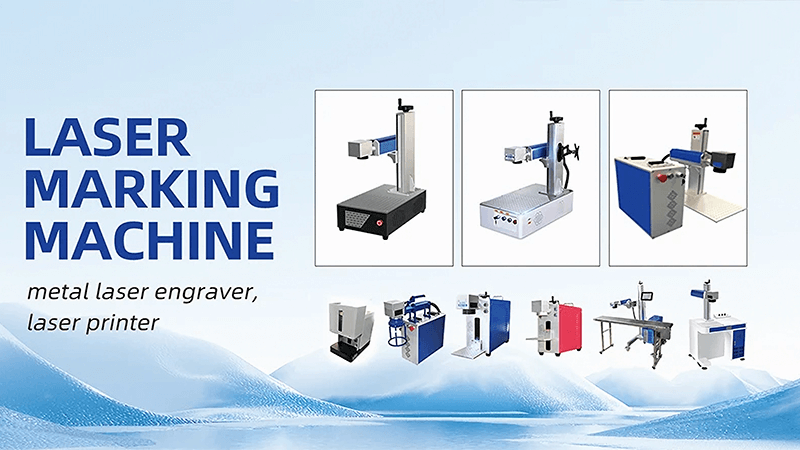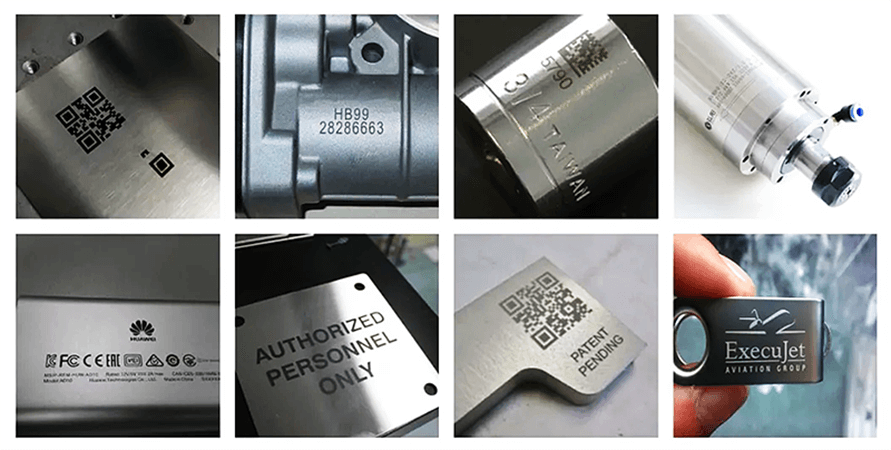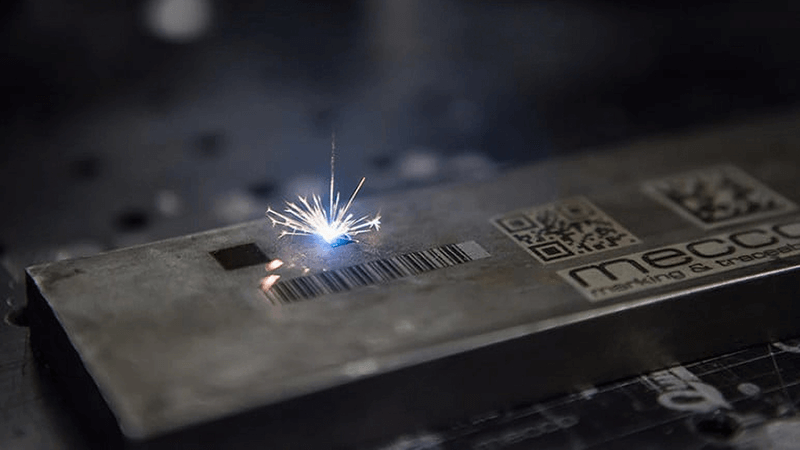I know how frustrating it is when marks on products fade or peel away. It leads to compliance issues, recalls, and unhappy customers. Laser marking machines solve this with permanent, precise, and durable markings.
Laser marking machines are used for traceability, branding, and coding across industries like aerospace, medical, electronics, and packaging. They provide permanent marks that survive heat, wear, and sterilization.
Many companies look for reliable marking solutions. Laser technology not only reduces errors but also creates consistent marks. Let me explain where and how these machines deliver value.

What are the applications of laser machining?
Many factories face problems when their markings wear off. It causes audits to fail and shipments to be delayed. Laser machining offers a permanent solution that saves money and builds trust with customers.
Laser machining is applied in industries such as aerospace, automotive, medical, electronics, and packaging. It ensures traceability, identification, and compliance by engraving serial numbers, barcodes, logos, or batch codes that never fade.
Dive deeper into industrial use cases
Laser machining applications can be grouped by industry and purpose. I often use them for critical traceability1, branding, and compliance. Here are the main areas:
1. Aerospace and Medical
These industries demand full traceability. Every part has a unique ID that survives sterilization, pressure, and wear. For example, surgical instruments must remain legible after repeated cleaning.
2. Electronics and Consumer Goods
Logos, QR codes, and component identifiers are common. A smartphone casing or circuit board must carry permanent marks for quality checks.
3. Packaging and Food
Expiration dates, lot numbers, and barcodes on plastics or cardboard are crucial. Ink fades or smudges, but laser marks stay crisp.
| Industry | Application Example | Benefit |
|---|---|---|
| Aerospace | Serial numbers on engine parts | Traceability under extreme heat |
| Medical | Codes on surgical tools | Sterilization-proof identification |
| Electronics | Barcodes on PCBs | Quality control and recall safety |
| Consumer Goods | Logos on plastic or metal | Branding and anti-counterfeit |
| Packaging | Expiry dates on plastic films | Durable and fast coding |
I once saw a factory lose contracts because ink-coded parts failed audits. After switching to our Kirin Laser system2, they gained reliable, permanent codes. Customers stopped complaining, and recalls dropped to zero.

What are the different types of laser marking machines?
Many buyers are unsure which laser machine fits their needs. Choosing the wrong one leads to poor results or wasted investment. The right type depends on the material, industry, and required output.
There are several types of laser marking machines, including fiber lasers, CO₂ lasers, UV lasers, and green lasers. Each has strengths for specific materials, such as metals, plastics, glass, or organic surfaces.
Dive deeper into machine categories
The diversity of materials in industry makes different lasers necessary. Let me break down the main types:
1. Fiber Laser
Best for metals, plastics, and high-speed production. Durable and low maintenance. Common in automotive and aerospace.
2. CO₂ Laser
Ideal for wood, paper, glass, leather, and plastics. Used in packaging, consumer goods, and crafts.
3. UV Laser
Great for delicate materials like glass, silicone, or thin films. It prevents thermal damage.
4. Green Laser
Effective on copper, PCB boards, and reflective materials. A good choice for electronics.
| Laser Type | Suitable Materials | Typical Use Case |
|---|---|---|
| Fiber3 | Metals, plastics | Serial numbers, barcodes on steel |
| CO₂4 | Glass, wood, cardboard, plastic | Expiry dates on bottles or packages |
| UV5 | Thin films, silicone, ceramics | Small electronics and medical tools |
| Green6 | Copper, reflective metals | Circuit boards and fine electronics |
When I recommend machines, I match them to the customer’s material and speed needs. One distributor used CO₂ lasers for packaging films but struggled with reflective plastic. Switching to UV lasers solved the issue, and their production improved overnight.

What are the advantages of laser machining?
Traditional marking methods like inkjet or stickers fade, peel, and require constant maintenance. That wastes time and money. Laser machining offers a cleaner, faster, and more reliable alternative.
The advantages of laser machining include permanent marking, low maintenance, high precision, eco-friendliness, and versatility across many materials. These benefits make it more cost-effective and reliable than traditional marking methods.
Dive deeper into the benefits
Companies choose lasers for a reason. I have seen how they transform both production quality and customer trust. Let’s look deeper:
1. Durability
Laser marks resist wear, heat, and chemicals. They last for the life of the product.
2. Cost Efficiency
No ink, solvents, or labels are needed. Maintenance is minimal, which reduces long-term costs.
3. Speed and Accuracy
Lasers engrave fast without sacrificing precision. Perfect for high-volume lines.
4. Eco-friendly
No waste, no toxic chemicals, and energy-efficient operation. This matters as regulations get stricter.
| Advantage | Explanation | Real-World Impact |
|---|---|---|
| Durability | Permanent and resistant to wear | Traceability for audits and recalls |
| Cost Efficiency7 | No consumables, low maintenance | Lower long-term production costs |
| Speed | High-speed, precise operation | Faster production without errors |
| Eco-friendly8 | No chemicals, less energy use | Greener compliance with regulations |
I recall working with a customer in the medical field. They relied on inkjet codes that washed away after sterilization. With our fiber laser machine, their instruments passed every compliance check. This single change saved them penalties and protected their brand reputation.

How many types of marking are there?
Marking can mean many things: engraving, coding, etching, or coloring. Without knowing the types, it is hard to pick the right solution. Understanding them avoids costly mistakes.
There are several types of marking: engraving, etching, annealing, and coloring. Each method creates a different effect on the surface, from deep cuts to subtle contrasts. The choice depends on the application and the material.
Dive deeper into marking methods
Each marking type has unique features. Some are better for durability, while others are for branding or contrast. Let me explain:
1. Engraving
This removes material from the surface. It creates deep, visible marks, great for serial numbers.
2. Etching
This alters the surface layer with heat. It is faster and works for barcodes or logos.
3. Annealing
Used mainly on metals like stainless steel. It changes the color by heating without removing material. Perfect for medical tools.
4. Coloring
Creates contrast or decorative effects. Popular for branding and logos on consumer goods.
| Marking Type | Description | Best Use Case |
|---|---|---|
| Engraving9 | Deep material removal | Serial numbers on aerospace parts |
| Etching10 | Surface melting for contrast | Barcodes on packaging or plastics |
| Annealing | Oxidation layer creates color | Medical tools and stainless steel |
| Coloring | Visual branding with high contrast | Logos on consumer goods and jewelry |
One client in the electronics industry struggled with faint marks that scanners could not read. Switching from etching to engraving made the codes sharp and scannable, solving traceability issues and cutting downtime.

Conclusion
Laser marking machines11 have become vital in industries that demand traceability, branding, and compliance. They work across metals, plastics, and delicate materials with different machine types and marking methods. I use them because they deliver permanent, precise, and cost-effective results. From aerospace parts to consumer goods, they offer reliability that ink or stickers cannot match. At Kirin Laser, we design and deliver these machines so businesses gain trust, improve efficiency, and build stronger brands.
-
Understanding traceability can enhance your knowledge of quality control and compliance in manufacturing processes. ↩
-
Discover how the Kirin Laser system enhances traceability and compliance, reducing errors and improving reliability in industrial settings. ↩
-
Explore how fiber lasers enhance efficiency in automotive and aerospace industries, offering durability and low maintenance for high-speed production. ↩
-
Discover how CO₂ lasers excel in cutting and engraving various materials, enhancing efficiency in industries like packaging and crafts. ↩
-
Discover how UV lasers prevent thermal damage, making them ideal for delicate materials like glass and thin films, enhancing production quality. ↩
-
Discover how Green lasers enhance precision and efficiency in electronics, making them ideal for working with copper and reflective materials. ↩
-
Understanding cost efficiency in laser marking can help businesses save money and improve their production processes. ↩
-
Exploring the eco-friendly aspects of laser marking can reveal sustainable practices that benefit both the environment and your business. ↩
-
Explore the advantages of engraving, especially for durability and visibility in marking applications. ↩
-
Learn about etching's speed and effectiveness for barcodes and logos, making it a popular choice in various industries. ↩
-
Find the best laser marking machine and laser marking solutions from Kirin Laser, clicking this link to get all your needs for your business. ↩





